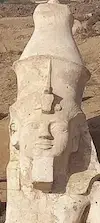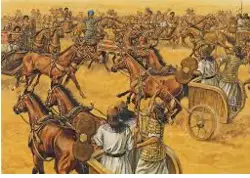|
Top Half of Giant Ramses II Statue Found 95 Years Later
March 31, 2025 Now Rameses II has his head again. 
A team of archaeologists have found the missing head to go along with the lower half of a statue of the famed pharaoh found in the early 20th Century. It was in 1930 that a team of German archaeologists led by Gunther Roeder found what amounted to the bottom part of what they estimated to be a 23-foot-tall statue of the well-known warrior king from the 19th Dynasty. The German team found that part of the statue in the Minya Governorate, 150 miles south of Cairo, near what is now El Ashmunein. In ancient times, the area was termed Khemnu and was a provincial capital. Ramses II ruled Egypt from 1279 BCE to 1213 BCE and lived to be 90, outliving many of this children. Famed as a warrior, he was also well-known for his commissioning of many statues, temples and other buildings, many of which celebrated his exploits. Among the most famous statues of him are the 66-foot-tall ones at Abu Simbel. 
Perhaps the most well-known of his battles was the Battle of Kadesh, in 1274 B.C. Fought between Egypt and an alliance of foes including the Hittites and the Mittani, this battle, sources say, was the largest chariot battle in history, with numbers of the horse-drawn battle vehicles exceeding 5,000; overall numbers for both sides have been estimated at 70,000. Tactically, the battle ended in a draw; that didn't stop Ramses from claiming victory. Further struggles against the Hittites occurred in the next several years; in 1258 B.C., Ramses and the Hittite king Hattusili III signed the Treaty of Kadesh, one of the world's first peace treaties. Helping relations between Egypt and the Hittites was the marriage of Ramses to the oldest daughter of the Hittite king. The 2024 expedition, partnering archaeologists from Egypt and the United States, found the 12.5-foot-tall upper half, which showed Ramses II wearing a double crown and a cobra-topped headdress. On the back of the statue are hieroglyphs detailing the king's variour titles. Also found were traces of blue-and-yellow pigment, which could lead more clues as to the creation of the statue and how it got there. Egyptian officials already have plans to reunite the two parts, to make one giant statue. |
Social Studies for Kids |
Social Studies for Kids
copyright 2002–2024
David White




